Pictorial health warning and plain packaging
Pictorial health warnings
Pictorial health warnings (PHWs) are a tobacco control measure laid out by the Article 11 of the World Health Organization Framework Convention on Tobacco Control (WHO FCTC) to warn the public about the harm of smoking. They are proved to be effective in preventing smoking initiation in never smokers and promoting intention to quit tobacco in smokers. Large PHWs can improve the public knowledge on the hazards of tobacco use and restrict the tobacco industry making use of the cigarette pack to promote smoking. WHO recommends PHWs with large, visible, clear and legible messages on at least 50% of principal areas of tobacco packs. As at February 2021, at least 126 countries and jurisdictions have implemented or approved PHWs.
Hong Kong introduced textual health warnings on tobacco packages in 1983 and gradually enhanced to PHWs in 2007. At least 50% of area of the two largest surfaces of each tobacco packages must be covered by one of the six designated PHWs. To enhance the impact of the PHWs, the Government increased the number of PHWs from six to 12, increased the size of PHWs from 50% to 85% of the two largest surfaces, and mandated a health warning message (“Quit smoking for future generations) and quitline number (1833183) on the PHWs in 2018.
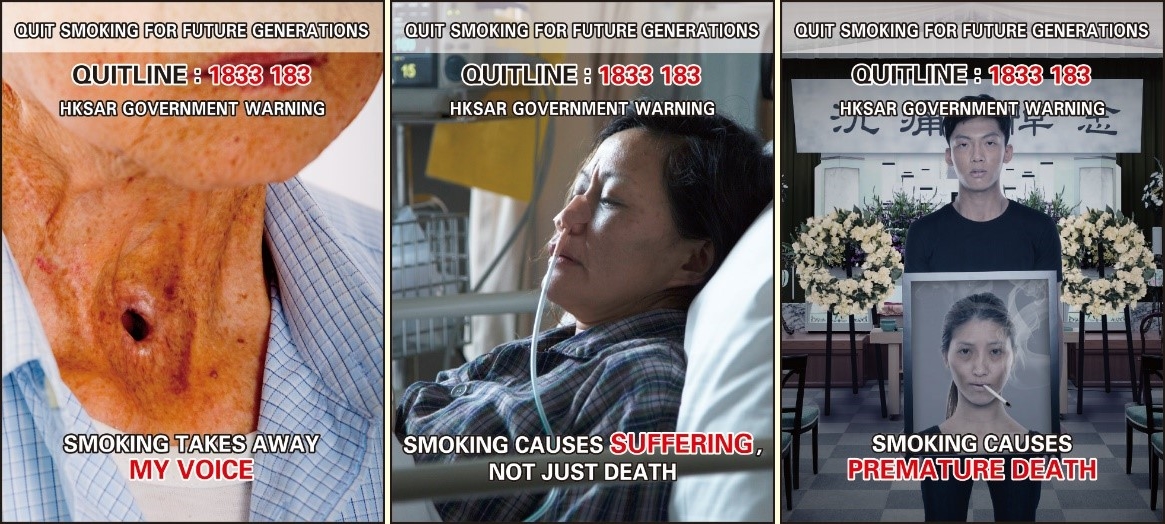
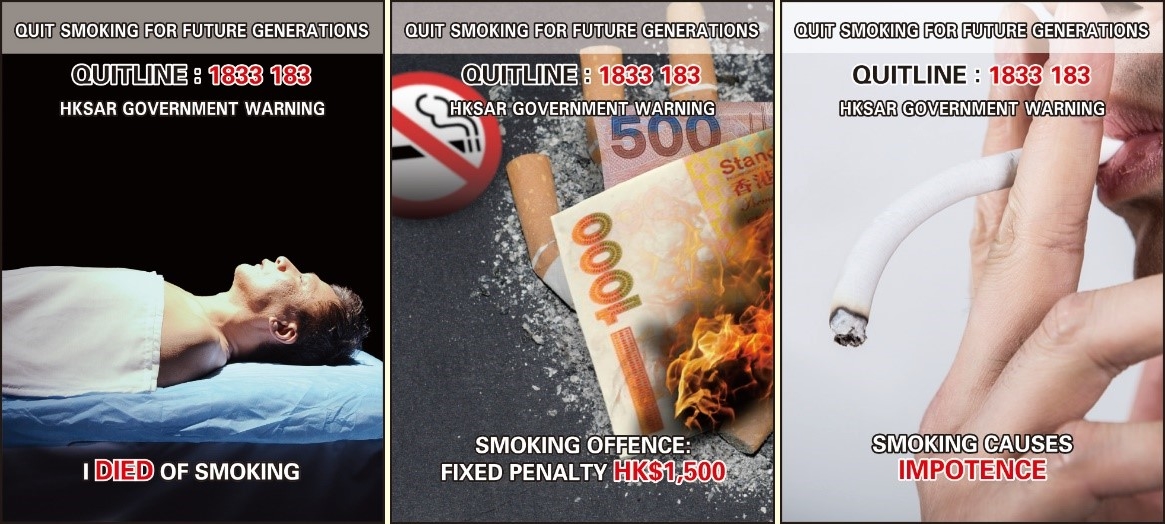
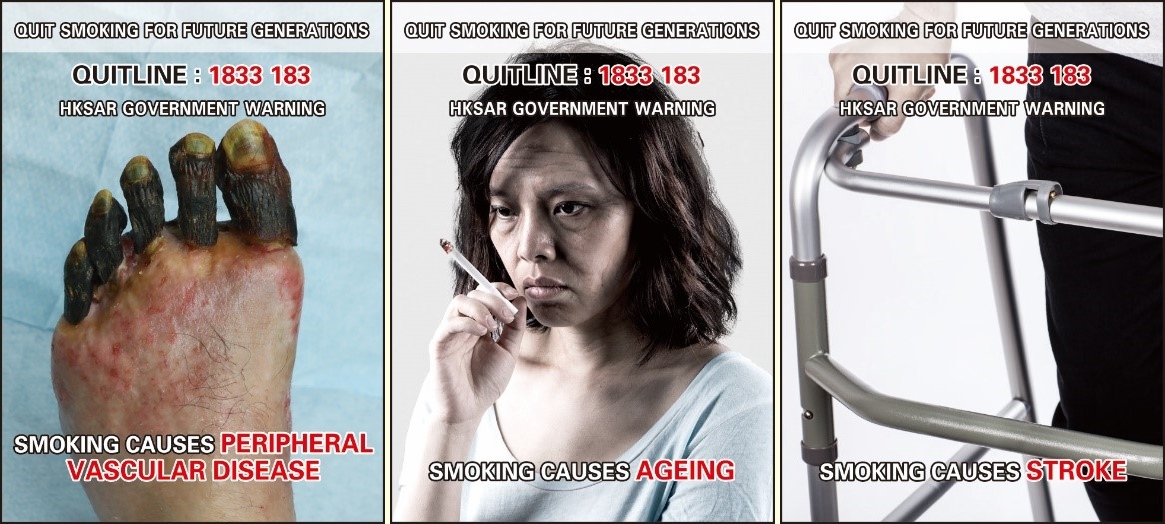
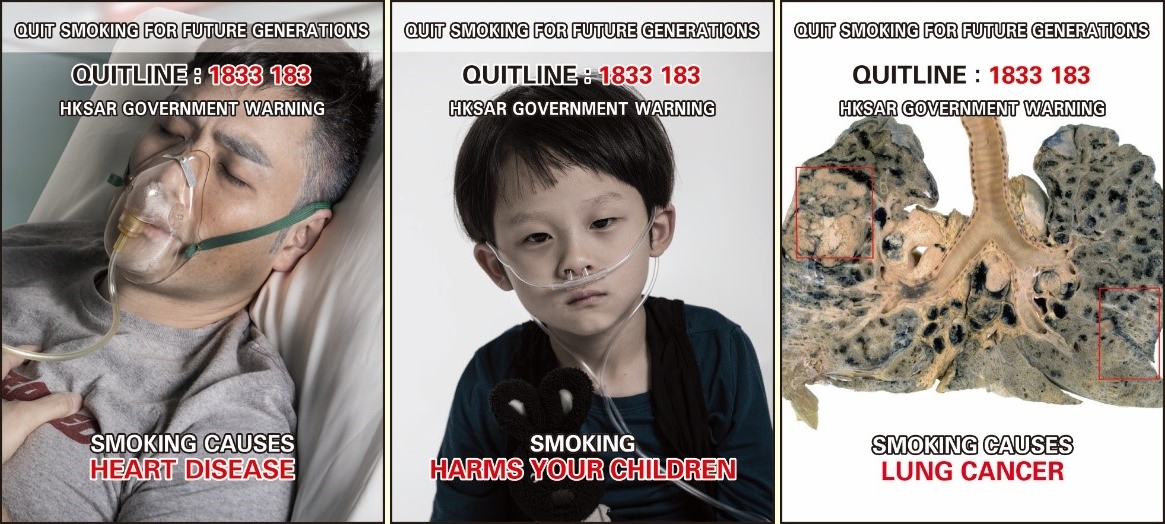
Please visit Smoking (Public Health) (Prescribed Information) Order for more details.
COSH’s Tobacco Control Policy-related Surveys conducted before and after the introduction of new and enlarged PHWs showed that the new PHWs disseminated the harms of smoking efficiently and appeared to promote smoking cessation (COSH Report No. 27).
Effectiveness of PHWs fades with time. According to Article 11 of WHO FCTC, it is suggested to have more than one set of PHWs for rotation every 1 to 2 years.
Countries with rotation of PHWs:
| Interval | Countries |
| Every 12 months | Australia (2 sets), European Union (3 sets), Jamaica (2 sets), New Zealand (2 sets), Saint Lucia (2 sets) |
| Every 24 months | Switzerland (3 sets), Liechtenstein (3 sets) |
Source: Canadian Cancer Society
Plain packaging
Plain packaging, also known as standardized packaging, removes all distinctive tobacco brand characteristics by prohibiting logos, colours, brand images and promotional information on tobacco packages. It allows brand names and product names only in a standard colour, location and front style, and requires PHWs on packages. It is first introduced by Australia in December 2012. Research found that plain packaging remove advertising through cigarette pack, increase education and warning on smoking hazards, reduce attractiveness and satisfaction of tobacco products and, enhance smokers’ thought and intention to quit.
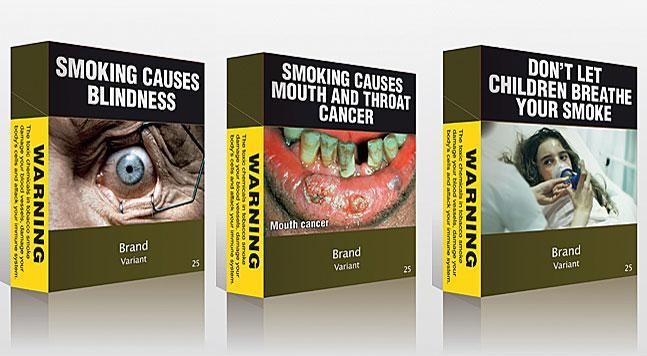
Plain packaging in Australia. Source: Tobacco Tactics
WHO FCTC Article 11 and 13 recommends plain packaging to increase the effectiveness of PHWs and eliminate the promotional effects of tobacco packages. To encourage parties to WHO FCTC to adopt this effective measure, WHO set plain packaging as the theme of World No Tobacco Day in 2016. As at July 2024, nearly 30 countries have implemented plain packaging, including Australia, Belgium, Canada, Cook Islands, Denmark, Finland, France, Georgia, Guernsey, Hungary, Ireland, Israel, Jersey, Mauritius, Monaco, Myanmar, Netherlands, New Zealand, Niue, Norway, Oman, Saudi Arabia, Slovenia, Singapore, Thailand, Turkey, United Kingdom, Uruguay
COSH urges the Government to implement rotation of PHWs or update the PHW images regularly to sustain the effects of PHWs, and adopt plain packaging to enhance the effects.
Download the factsheet (Chinese version only)
